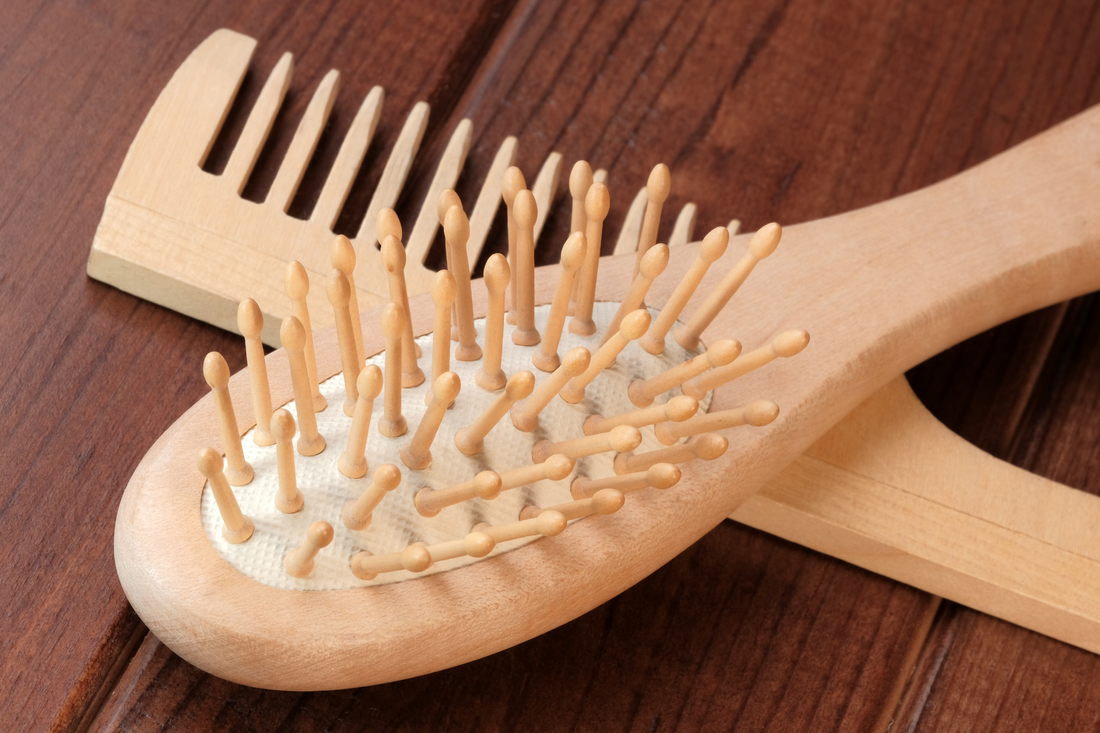Brushes vs combs: Brushes and combs both serve the purpose of detangling, styling, and even massaging your scalp. But they’re also culprits to some of the worst breakage. So how do you choose between using brush vs comb? Do you need both? Read on to understand how to best use both brushes and combs and the difference between the two for the healthiest and strongest version of your hair.
Benefits of using brush vs comb
The best time to use a comb is when your hair is wet. Contrary to what you might think, hair is most susceptible to damage when wet, as this is when cuticles are open and fragile. Use wide tooth combs with conditioner or detangling spray to prevent pulling out strands of hair.
Wide-tooth combs that come with more space between each tooth are less likely to damage your strands. While looking for the best comb vs brush, keep in mind that more space in between the bristles or prongs will allow for healthy maintenance. In addition, people who use combs vs brushes usually feel less static in their hair.
Benefits of using a comb vs brush
What about a brush? Odds are, you have grabbed a brush to detangle your morning hair or style it for an evening out. Brushing is a decent way to detangle your hair and also improves the appearance of your hair by smoothing out strands and adding shine. This being said, while these benefits seem helpful, studies show that hair loss is actually reduced by decreasing brushing frequency, so remember to brush slowly and gently.
Boar bristles for thin hair
Softer boar bristle brushes work well for fine hair or those experiencing hair loss or thinning. Boar bristle brushes stimulate the scalp and increase circulation to your hair follicles, yet are gentle enough on your hair and scalp that you won’t have to worry about major hair breakage.
These types of brushes also promote a healthy distribution of your scalp’s natural oils which strengthen your overall hair shaft. The result? Shiny, detangled hair with minimal pull!
Brush vs comb: it’s all about the technique
Whether you choose a brush vs comb to detangle and style your hair, it really comes down to how you use the brush or comb. Some harmful hair care practices include bleaching hair, a longer pull of the brush through hair, and combing wet hair. These all contribute to a higher likelihood of hair breakage. Using a brush in your hair over a comb creates more damage, especially on wet hair.
Whether you’re using a brush vs comb, always remember to treat your hair gently and that any tool used has the chance of damaging your hair.
Best method of brushing versus combing your hair
After you choose your go-to tool for brushing or combing, the next important thing is the technique. Start brushing or combing your hair at the very bottom. Hold onto the hair above the knots or tangles so as to not pull directly from the scalp. Move up gradually until you can easily brush or comb through the entire length of your hair.
Regardless of if you’re using a comb or a brush, avoid starting at the roots. Instead, work your way up from the bottom of your strands and go up until your hair is tangle-free.
Listen to your hair
Since everyone’s hair is different, when it comes down to making a decision between brush vs comb, listen to your own hair. Especially since there are no hard facts on whether brush vs comb is right for you. Being mindful of your personal experience and how using either brushes or combs feels on your scalp and hair will help decide which is the right choice for you.
Strengthening your hair in other ways will also make brushing or combing easier. Incorporate detangling products and protecting oils pre-brushing into your daily hair care routine and avoid brushing wet hair. If you’re struggling with thinning hair or shedding, incorporating the Revela Hair Revival Serum will help kickstart your hair growth so you can worry less about damaging the growth you have.





